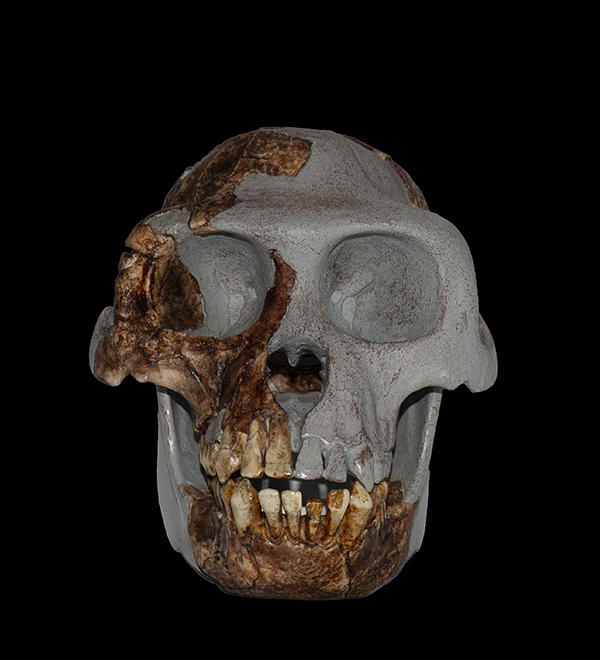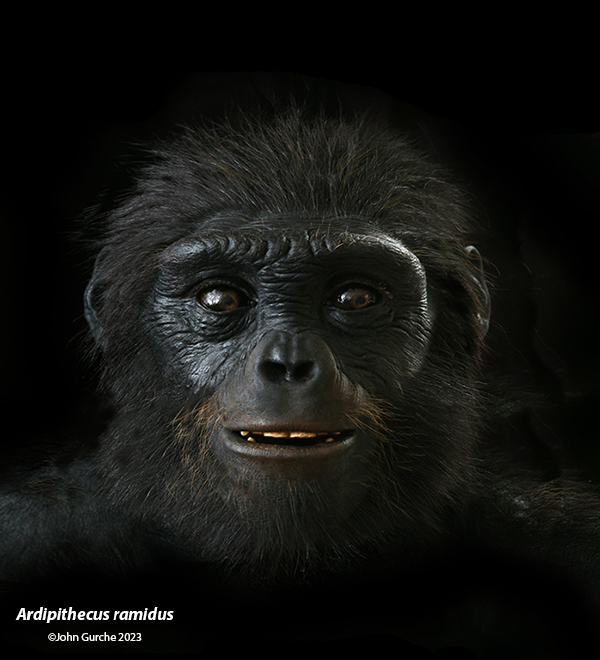Ardipithecus ramidus
Skull ARA-VP 1/129 - 4.4 Million Years Ago


Ardipithecus ramidus was discovered by Tim White and associates in 1994 in the Afar region of Ethiopia. The partial skeleton ARA-VP-6/500 is now considered by many to be the oldest skeleton of a possible human ancestor. The sculpted recreation is based on the published photos in Science Magazine, and data from scientific papers including photos, and documentaries. The discovery team's examination of the pelvis indicates that this species was able to walk upright, not with the same fluidity of later humans or even 'Lucy' but with much more efficiency than chimpanzees. However, the lower part of the pelvis offers evidence that the species possessed the musculature required for tree climbing. The bones of the wrist indicate, according to the discovery team, that while moving quadrupedally, weight was placed on the palms of the hands rather than on the knuckles like modern great apes. Overall, the evidence suggests that this species was adapted to both life on the ground and in the trees. White and associates hypothesize that Australopithecus is a descendant of Ardipithecus, while others hypothesize that Ardipithecus might be an extinct sister species to Lucy's genus.
Read more Australian Museum's Ardipithecus ramidus
- Hominin Skulls - Select a Species
- Ardipithecus kadabba
- Ardipithecus ramidus
- Australopithecus afarensis
- Australopithecus africanus
- Australopithecus anamensis
- Australopithecus garhi
- Australopithecus sediba
- Denisovans
- Homo antecessor
- Homo erectus
- Homo floresiensis
- Homo habilis
- Homo heidelbergensis
- Homo naledi
- Homo neanderthalensis
- Homo rudolfensis
- Homo sapiens
- Kenyanthropus platyops
- Ororrin tugenensis
- Paranthropus aethiopicus
- Paranthropus boisei
- Paranthropus robustus
- Sahelanthropus tchadensis

